Education
Spinal Segments
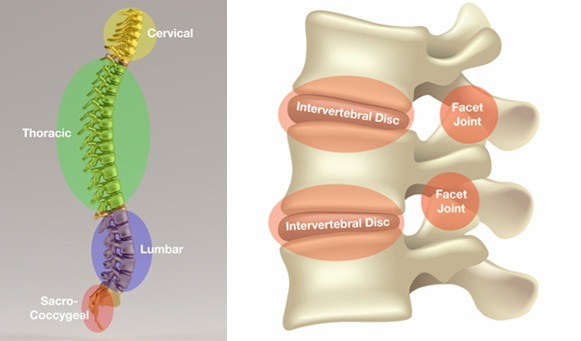
The spine is divided into 4 main segments: the cervical (neck), the thoracic (upper back), the lumbar (lower back) and the sacrococcygeal (tailbone) spine. The vertebrae (spinal bones) link at each level through joints. The smaller joints are called facet joints and are located directly on the back – these joints are made up of the bones you feel when you push on your back and are important in rotation and bending. The intervertebral disc act like large joints to provide stability and motion to the spine – these are located deep within your spine and can be thought of as the “core” of the spine. All of these bones, discs and joints work together to allows us to have an upright posture and walk with stability.
The Disc
The intervertebral disc is the piece of tissue that sits between the vertebrae (bones) of the spine. These gelatinous solid structures serve to help maintain spinal alignment, provide flexibility, and absorb shock. The disc represents the most important part of the spine. Good discs generally mean good spine.
Degeneration
When you are born your discs are similar in consistency to a scallop – plumpy and resilient. This special structure allows them to function in keeping us flexible, stable and pain free. But a combination of ageing, poor posture, repetitive activities, injuries and genetics can cause our discs to lose its natural consistency and result in a dryer, more collapsed disc that is more prone to fragment. This is known as disc degeneration (spondylosis).
What’s Wrong with My Spine?
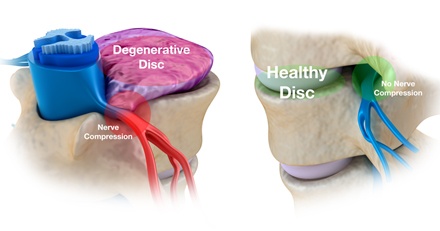
As the disc degenerates, many things can happen. As the disc collapses it can put undue stresses on the facet joints and cause the formation of bone spurs and reactive tissue that can compress the nerves. The disc can also break into pieces which can migrate into an area that puts pressures on nerves (herniated / bulging disc). In addition, disc degeneration can lead to excessive motion in the spine (spondylolisthesis) and abnormal curvature of the spine (scoliosis). In all, these different processes can results in nerve compression which can manifest as many different symptoms including numbness, tingling, burning, weakness, muscle cramps, radiating pain (in arms, legs), neck / midback / lower back pain, balance issues and bowel and bladder problems.
The Goals of Spine Surgery
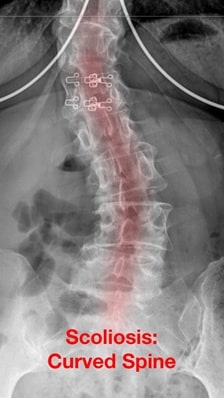
Many spine surgical procedures are elective procedures. This means, the patient has to decide when they are ready for surgical intervention. At the Webster Spine Institute, we make every attempt to use conservative measures including education, lifestyle changes, medications, focused therapy programs, injections and alternative medicine to treat symptoms that are due to spine problems. Every patient is different – we all participate in different activities and share different goals and expectations with regard to living our life. We offer spine surgery as an option who experience persistent symptoms that severely impair their quality of life. Spine surgery can typically be divided into decompression procedures, stabilization/fusion procedures or motion-preservation procedures; we sometimes use a combination of these procedures when treating your spinal condition.
Decompression Procedures
A decompression procedure is any procedure which takes pressure off of the nerves or spinal cord. Some special decompression terms you may see include laminectomy, facetectomy, flavectomy, foraminotomy and discectomy; each procedure refers to the specific part which is being removed (part-ectomy). Traditional techniques typically require moderate dissection to access the problem area to provide more room for the nerves. Dr. Hasan is specially trained in endoscopic techniques which allow him to use small cameras to treat the same problem areas with less dissection.
Less dissection generally means less pain and quicker recovery. These procedures are typically performed as an outpatient and typically take a few hours to complete. Recovery typically takes from 2 - 4 weeks. Occasionally, patients may stay one night for post-operative monitoring.
Motion Preservation Procedures
Motion preservation procedures are typically used as an alternative to fusion. They are typically used when the degeneration is moderate – they provide stabilization of an area while still preserving motion. Examples of these procedures include disc replacement, interlaminar devices (Coflex) and laminoplasty. These procedures typically require less dissection and less restrictions in the post-operative period. These procedures typically require a short inpatient stay, which can range from 1-2 days. Recovery typically takes from 3 to 8 weeks.
Stabilization / Fusion Procedures
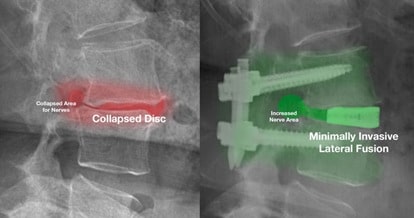
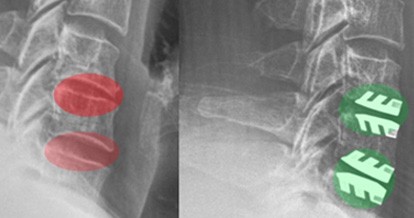
A stabilization (fusion) procedure is any procedure in which the spine is joined together (fused) via screws, rods and cages. These procedures are also needed to reposition and straighten a spine that has severely degenerated. Different types of hardware can not only link the spine together, but also provide more space for nerves by opening up a collapsed disc space to reconstruct and expand a smaller area. We use minimally-invasive techniques to access the spine – these techniques involve minimalizing muscle trauma by accessing the spine via the abdomen, the flanks or the back. We also utilize the latest technology when placing hardware including computer-assisted navigation and robotic-assist tools. Sometimes we may need to stage a procedure over more than day. Ultimately, Dr. Hasan discusses the benefits of each different procedure and a shared-decision is made that best addresses the patient’s goals. There is some loss of flexibility after these procedures, however, this loss of flexibility rarely interferes with normal activities. These procedures typically require an inpatient stay, which can range from 1-4 days, depending on how degenerated the spine is. Recovery typically takes from 6 weeks to 3 months. We typically utilize a brace during the post-operative recovery period. Occasionally, larger surgeries may entail a longer recovery period.

